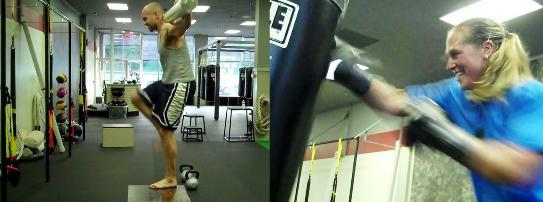Importance Of A Strong Hip Complex
by Rugged Coaches on 07/01/16
Contributed by Coach Tommy
We typically look at athletic movement and see limbs moving at amazing speeds. What gets noticed is the athlete's strong legs or muscled arms, but rather it is usually the bi-product of the much stronger muscles closer to the core.
When we think of which parts of our anatomy generate power, one of the muscles that should be at the top of the list are the Gluteals. These powerful hip, external rotation/extension muscles are the driving force in almost all athletic movements. If you take a look at any sprinter or power athlete you will notice a very defined backside.
This area is often overlooked in training programs, and also easily bypassed when executing a lift as well. We see a lot of lumbar back extension instead of hip extension, and it can be hard to turn off in some instances. We tend to use our back extensors much more when we also have a faulty breathing pattern. What I have seen a lot over the years are athletes and general population clients stuck in a state of sympathetic dominance. This means they are always ready for "action". If this pattern is always on it leads to a more extended postural position. The result is that the hips are now being dominated by an overactive back and diaphragm.
"We see tons of injuries to the hamstrings and lower back, but rarely encounter any sort of injury to the glutes. The fact of the matter is that most athletes are tight in the hamstrings, lower back and hip flexors. This collection of problems is related to the lack of strength and motor control in the gluteal muscles. Furthermore, when our 'butt' muscles aren't up to the task, the hamstrings and erector spinae are forced to work overtime to compensate. This unfortunate cycle often results in injury or at the very least, sub-optimal levels of performance." Eric Cressey (Cressey's Performance) & Mike Robertson (IFAST)
How do we reverse these patterns? It depends. Breathing drills help prime the trunk to be in a position for a better functioning hip. Another very important piece is being able to come out of that sympathetic state. If we can get the back extensor tissues to shut off, we may have a better opportunity to recruit the hip. More often than not, it isn't that a client needs more training, he/she actually needs a way to shut down, and then reset with a simple exercise to groove a more efficient pattern.
I like to use to a breathing drill, followed by a hip movement on the ground. It is easy to execute and doesn't require the body to fight against gravity as much and minimizes the number of joints involved.
Example: Glute bridge w breath
Watch
the 2 minute video and see if you can feel the difference when your
whole posterior chain works together. Try about 5-1o reps and note what
is working.
It is very different to see an athlete who can use
his/her glutes and whole posterior chain, compared to one that uses
just his/her back. Besides performance being improved, risk of low back
issues or injury in general is decreased. With a few consistent
strategies, this issue can be addressed efficiently and effectively.
You will notice this is a key component in each program.




